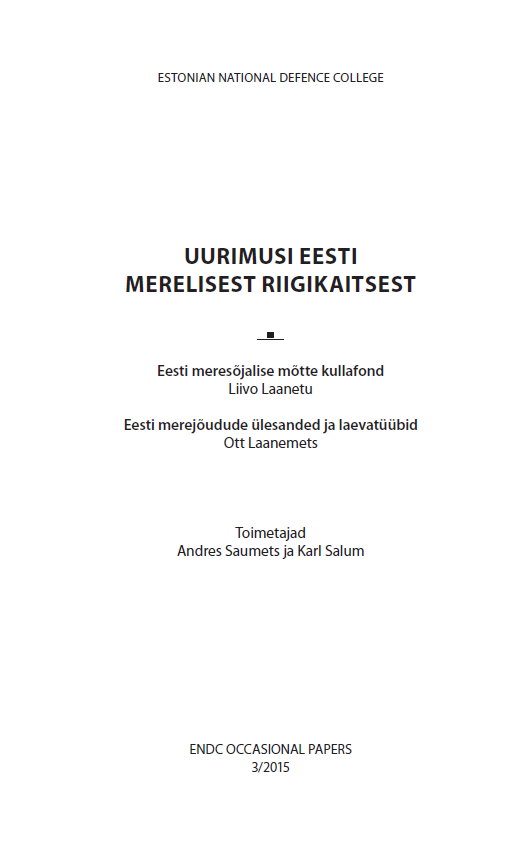EESTI MEREJÕUDUDE ÜLESANDED JA LAEVATÜÜBID
AN ANALYSIS OF THE FUNCTIONS OF ESTONIAN MARITIME FORCES AND RELATED SHIP TYPES
Author(s): Ott LaanemetsSubject(s): Security and defense, Military policy, Geopolitics
Published by: Kaitseväe Akadeemia (KVA)
Keywords: Maritime sector; Estonian maritime; Military vessels; Ship types; Police and Border Guard Boards;
Summary/Abstract: Since regaining its independence in 1991, Estonia has had three state-owned fleets: Defence Forces (i.e. navy), Police and Border Guard Boards (i.e. coast-guard) and Maritime Authorities. The main problem in the first two categories has been the low priority given by its parent organisation and a lack of resources. All three fleets have developed independently as missions and tasks have been derived from the jurisdictions of governing ministries, which have not considered the maritime environment as a whole. Secondly, the current approach to maritime affairs in Estonia is very land-centric, and therefore one cannot find any naval defence issues in defence and securitypolicy documents, which do not correspond to Estonia’s geographical position.Since the creation of all three state-owned fleets, there has been talk of consolidating Estonian maritime forces, but all attempts to bring any clarity to the issue have ended unsuccessfully. The main reason has been a lack of common understanding about what tasks the state has to fulfil in its territorial waters (TTW), exclusive economic zone (EEZ) and internationally. Therefore, the main objective of this article is to find the answer to the following question: why should Estonia have one unified state-owned maritime force for naval and maritime security missions grounded in solid naval and maritime security theory? The first chapter examines Estonia’s maritime interests through an analysis of the components of sea power and finds that Estonia is a maritime country in geographical position only. However, thestate has maritime interests despite common maritime blindness. The second chapter examines the roles of Estonian maritime forces based on a trinity of functions – military, policing and diplomatic, unified by the idea of using the sea – the ship, which can contribute to all roles concurrently. The military role of Estonia’s maritime forces includes protection of sea lines of communication (i.e. restricted sea control) and coastal defence (i.e. sea denial). In their maritime security role, maritime forces have to deal with all dimensions of maritime security despite the relatively good order on the Baltic Sea.
Journal: EMA OCCASIONAL PAPERS (until May 2019: ENDC OCCASIONAL PAPERS)
- Issue Year: 2015
- Issue No: 3
- Page Range: 97-187
- Page Count: 91
- Language: Estonian

